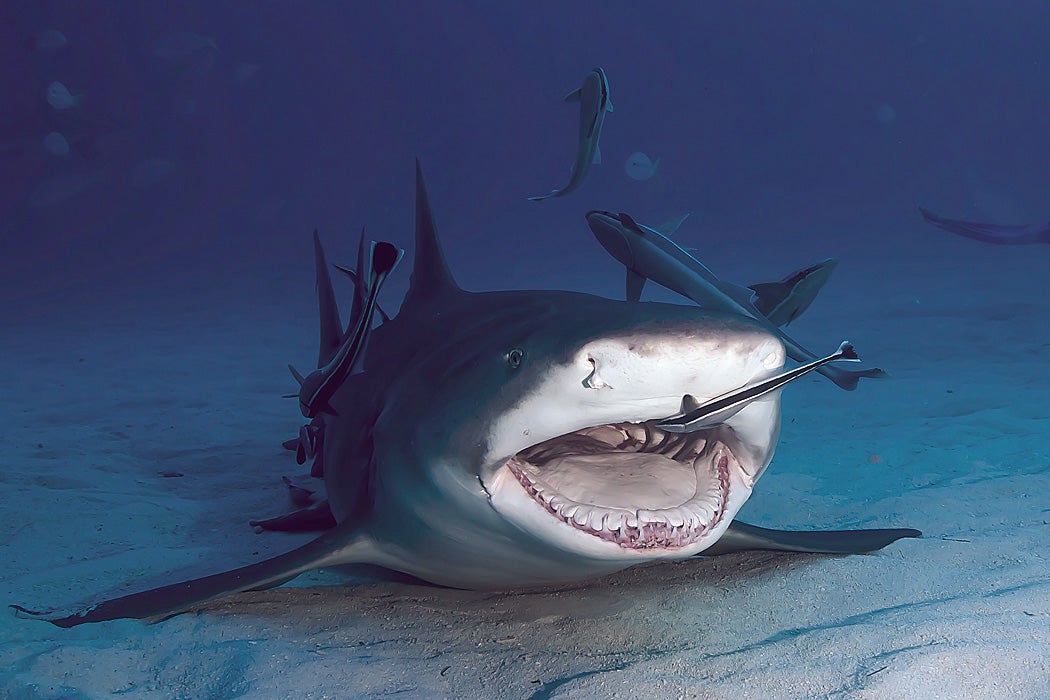A few lucky snorkelers and divers have actually seen it happen: A large fish patiently sits still while small fish or shrimp swarm around it, sometimes even entering its mouth. After a time, the large fish moves off and another takes its place. Sometimes there is a line of large fish waiting for a turn. This is a “cleaner station,” a place where large, often predatory, fish have parasites removed by smaller animals, which eat the parasites. The cleaners face all the travails of any small business, but with one wrinkle: The customers, under any other circumstances, would eat the staff.
In fact, as Marta Soares and her colleagues write in the journal Behavioral Ecology and Sociobiology, dangerous clients are some of the biggest challenges faced by cleaners. Studying cleaning wrasses in the Caribbean, Soares observed that cleaners should, in theory, choose the least dangerous clients covered in the most parasites—the biggest payoff for the least risk. But things turned out to be more complicated under the sea. For one thing, dangerous and safe client fish alike have similar numbers of parasites. In fact, rather than avoiding dangerous predator clients, the gobies gave them preferential treatment and tended to the predators first. They were more likely to make first contact with a waiting predator. And they cleaned more predators overall. Perhaps like a china shop owner trying to get rid of a bull, the cleaners want to deal with their difficult clients first. Besides, the predators scare away all the preferred, non-predatory clients, so best to get them over with.
None of this is to say that cleaners are always honest. Even in the fish world, it’s buyer beware. Observing a different type of cleaner wrasse in the Red Sea, the biologist Redouan Bshary notes that some cleaners, instead of just sticking to parasites, will take a bite of a client fish’s mucus or skin. Client fish have to observe a cleaner station and make sure that such “cheating” is minimized. Client fish tend to avoid those stations where previous clients receive more bites. When cheating does occur, those fish with access to fewer stations are more inclined to chase the cheaters for revenge. Those with more options will choose a different station for their next cleaning. Cheaters, not being stupid, are less inclined to cheat their more dangerous, predatory clients.
Weekly Newsletter
In the tradition of sleazy businesses everywhere, the cheating cleaners’ business model depends on periodic bouts of “deceptive honesty.” They are aware that potential clients will watch their cheating and avoid them, so they attract business by providing smaller, safer clients with honest parasite removal services. Their bonafides established, they then proceed to bite their clients.
The honest cleaner station is an example of mutualism, where two or more species mutually benefit from the interaction. Kind of like car sales, parasite removal is clearly a needed service—or it would not persist in the face of widespread cheating. People and their environment are more similar than most want to admit.







